Forward Thinking
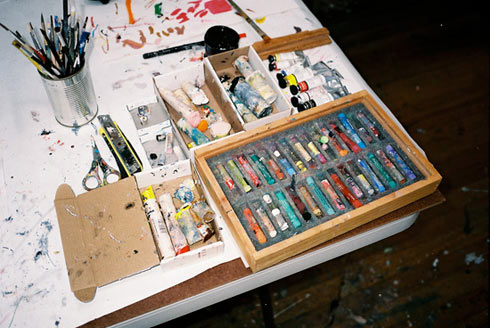
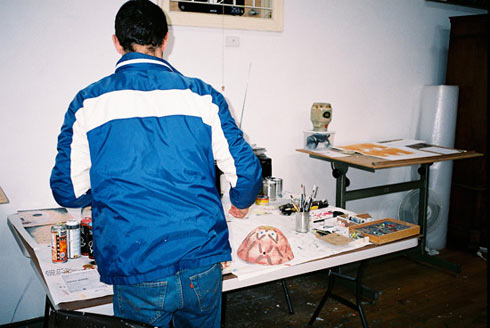
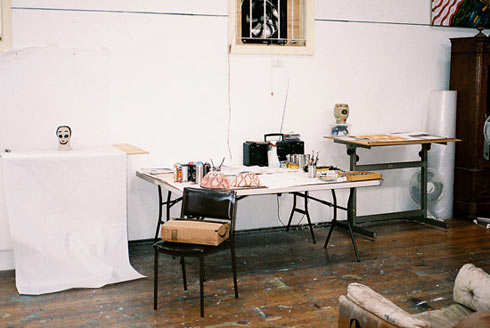
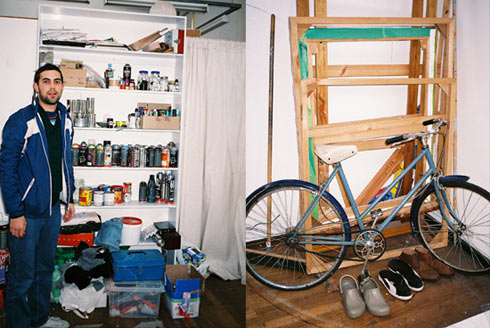
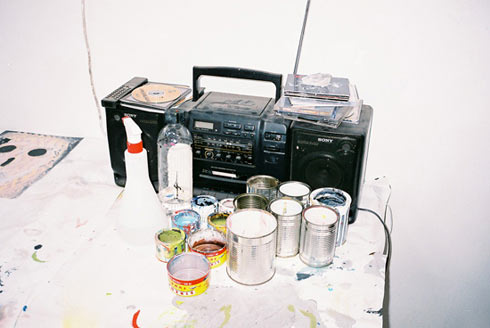
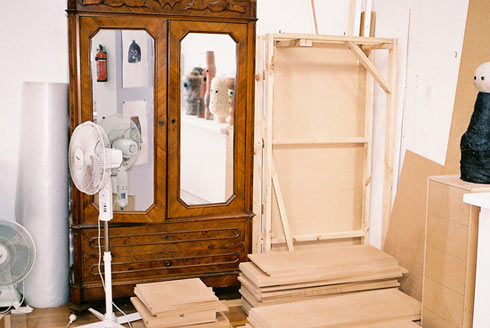
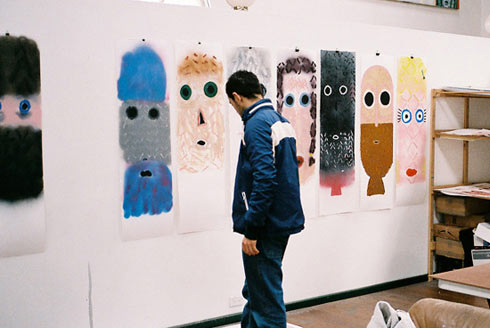 Words & Images: Tristan Ceddia
Words & Images: Tristan Ceddia
Brendan Huntley is a pretty infectious human. If you have ever met him, or seen his band Eddy Current Suppression Ring live, you’ll know what I’m talking about. I recently found out that scientists are looking at the possibility that our stomach’s may posses something called ‘perception intelligence’. If this is true, Brendan’s ‘perception intelligence’ is spot on. His ability to go with his guts grants him the power to create honest, uninhibited artwork and write lyrics that mesmorise the crowds. In the spirit of how he approaches his work we had a conversation about his upcoming exhibition at Utopian Slumps in Melbourne.
Tristan Ceddia: You’ve got your second solo show at Melbourne’s Utopian Slumps gallery. Earlier this year you showed at Hell Gallery in Richmond. How do you set up for shows in different spaces. Do the confines of the gallery affect your working/exhibiting process?
Brendan Huntley: Hell Gallery is a fairly small, but nice sized space. It’s considerably smaller than the Slumps with one singular room. The work I showed at Hell was quite small, whereas the work for the upcoming Slumps show is considerably larger. I’ve worked knowing that I’ll be showing at Slumps later in the year, I put aside a collection of pieces, separating the two bodies of work, larger work for the Slumps and smaller work for Hell. In my head, I can see the pieces together as an installation. As I make a particular work, as it unfolds, I know that it makes sense for a particular show. A few of weeks ago, I went through and worked out which particular sculptures were going to go into Slumps. I took them out on my lawn and laid them out how I would in the show, on the plinths, in the space. I really had a think about which works need to go in, which works worked as individuals , and which ones worked as a sculptures in relation to each other and the painting on paper. I had to consider all this stuff working together individually and as a group at the same time.
TC: In previous shows you presented certain sculptures in sets. Two to four pieces presented and sold as a cluster. What’s the relationship you see happening with these pieces. Why is it important that they carry on together?
BH: I like my work to be able to stand up on its own. Eventually the whole show will be separated, so most importantly the work needs to be able to stand on its own, as a singular sculpture and secondly as an intstallation. Unless they’re being presented as a couple or a group, in which case they go off as a couple or a group and stay that way. I guess, without over analysing things, it has to be that way. It’s like a set of cups or a group of people. It’s that certain feeling you get from a group, a certain energy is coming at you. Are you going to be able to walk past with no hassles, or do you need to cross the street? It’s a different situation, but its the power of the group that I want to capture in those certain pieces. It comes across as a set of jugs, or as a group of people. It’s a feeling. Sometimes it’s different depending on what time of the day you approach them. When they are walking down the street, whether it’s a safe time, at a certain point they have a certain feeling.
TC: Do you find when you are working on a cluster, you are building them at the same time, or are you creating one piece and deciding that it needs a partner or a flock?
BH: It depends, sometimes it’s two particular individuals that come together as one. In the Hell show there was a couple, a girl and a guy and they were together. They are singular energies on their own, but together they create another sort of energy. Like in a relationship. Like say, celebrity couples. They are individuals on their own, but together they are that power couple, together thay have a certain energy. Not even in a celebrity sense though, it could be two people that live out in the suburbs, they join forces, and they make an energy from their two singular forces.
TC: Do you feel like the characters in your work represent parts of your personality in some sense?
BH: Without taking something from me, the pieces definitely hold the energy that has come through me and has been expressed in the piece of work. I guess when you make something, it’s like the universe is working through you, out your hands, out your mind and into the clay, or onto the paper. I don’t feel like I have ownership over the works personality, it’s just like a little piece of energy that has come through me and been captured.
TC: I know that with your work, as much as you can talk about these relationships, none of it is really thought about or pre-conceived, it all happens very naturally right?
BH: Yeah, the work happens, and the analysis comes later. I don’t really think it out, but it’s times like this, in an interview, that I do. You can really try to think about this stuff, but it’s pointless really. Like I said, at different times you look at different things and you can get a different feeling. Not just like an observation, it’s something beyond that. There’s no point in you really writing any of this down, because at the end of the day, I would prefer people to look at something and get their own feeling from that particular object, as they would if they saw a cross or a painting on the wall. Whatever it is, it’s for that person to figure out what they want to take from it and that could be a lot or not much at all. It depends on what reaches out to them. The power of the cross is phenomenal, it’s a really powerful object. It’s bizarre, people wear one around their neck and feel secure, or have one on the wall and it means their home is blessed. The power and the feeling goes beyond the object. The same thing goes on with art in general, maybe not all art, but you get what I mean.
TC: Do you form special relationships with your paintings and sculptures when you’re creating them?
BH: Yeah definitely. Especially after spending so much time with the work, having them hanging around the studio you really form some great bonds with them. It can be hard to say goodbye to them at times. …The relationship with clay as a material itself is extremely important too and it goes way further than trying to analyse what a piece of work means. The energy involved in working with clay is a pretty awesome experience…
TC: We’ve all seen Ghost right?
BH: Exactly, we have all seen that movie (laughs) – that’s pretty sexy! But it really is a relationship in itself. If I don’t get down to the studio, I have withdrawals. It’s not like I am addicted, I just love getting down there, being on my own, getting on the wheel or sculpting, putting things together, carving away, adding things. Just squishing clay in your hands, or squishing an oil stick down onto the paper,squishing it in, moving it around and getting that richness out of the materials. It’s that awesome squish, or even spraying some paint down, seeing it all fall into place, or gliding the brush soaked with glaze across the clay. It’s a hard feeling to explain, but that’s what I enjoy, the actual process. It’s like jamming, making music, you’re making something that wasn’t there before and often it owns you. Often it takes over what you even thought you were trying to make. All of a sudden the shape is different from what you were trying to make and you think, do I fight this, or do I leave it how it is, or does it fall somewhere in between? Often the best stuff comes when you just embrace where it’s taking you. You let yourself go… like in Ghost!
TC: Both your parents practiced pottery and painting. Having their influence as well as access to materials must have been formative for you as a child?
BH: Yeah, I grew up always being encouraged to draw, just like every kid, but maybe more so since the materials were always around. We always had lots of scrap paper to draw on, books, crayons, pens, textas, we were encouraged to use whatever materials were around us. Having a work shop out the back of our house was also pretty excellent. I have had clay in my hands, probably just eating it, since the day it was safe to put clay in a kids hands. I think this definitely has been the main reason I have had that natural urge to continue using clay. I grew up in a naturally creative environment, I’ve always felt comfortable with it. It’s like kids who were bought up with sporting families. Some move away, but some embrace it. I often think what if I was bought up in a family of athletes who adored football, what would I be doing? Would I be a different frame or structure? Would I be thinking completely different because of that? I really appreciate the fact that I have been nurtured in my particular way. I love it.
TC: When I came to your studio recently, you had work further evolved than the work you are exhibiting in the Slumps show. It’s interesting to think about the process of working and exhibiting. You have everything ready for one show and you are already exploring past this stuff creatively, and then you have to stop and work on presenting this somewhat older work for a show.
BH: That’s a good statement. I definitely have had to put a few things aside. Like I’ve had to try and put the creative process on hold to get this Slumps show up. Build the plinths, go to the framers, organise everything. It’s a whole different ball game, actually it’s more like the same ball game, just one part’s the batting and the other is the bowling, or the other way around, either way without that stuff, shit doesn’t happen. I’ve been missing getting in the studio and messing around because I have to build and paint all these bloody plinths. It’s a different state of mind setting up for a show, different to creating. It can be tough working it all out, still exciting, but it’s very different to the creative process, But you can’t have one with out the other and I’ve had to realise that. You really have to get into it and enjoy it, or just be happy not showing it at all. For me it’s all based on decisions, based on gut feelings. You gotta go with your guts.
Looking Forward by Brendan Huntley opens at Utopian Slumps on September 11 from 6pm and runs until September 26.
Next Article: Lucy Folk – A Fist Full Of Gold



